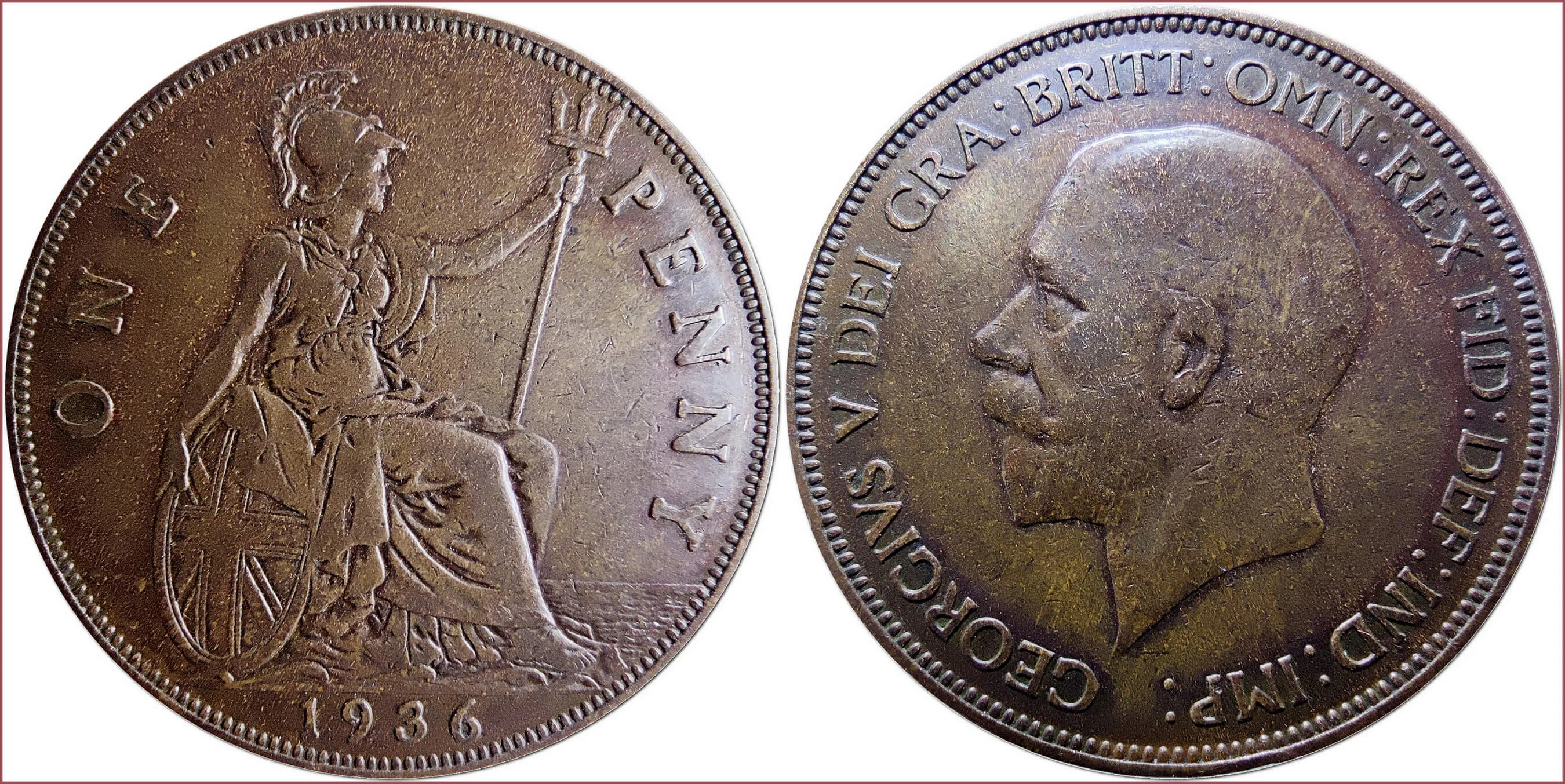PENNY: COIN OF UNITED KINGDOM
1 penny, 1936: United Kingdom
Ruler: George V (George Frederick Ernest Albert) — King of the United Kingdom and the British Dominions, and Emperor of India (during 1910-1936).
ONE PENNY, 1936.
Britannia — a seated woman in a Corinthian helmet, with a shield and a trident of Poseidon as a symbol of Great Britain (the symbolic national personification of Britain).
GEORGIUS V DEI GRA: BRITT: OMN: REX FID: DEF: IND: IMP: George V by the Grace of God King of all the Britains, Defender of the Faith Emperor of India.
Portrait of George V.
Coin design: Sir Edgar Bertram Mackennal and Leonard Charles Wyon.
Royal Mint (London, United Kingdom).
Mintage: 154.296.000.
- Bronze: 30.8 mm - 9.45 g
- Reference price: 0.9$
COIN PENNY — WHERE & WHEN (coins catalog: by names & emitents)
- UNITED KINGDOM (from 8th century): penny = 1/100 pound (before 1971 — penny = 4 farthing = 1/12 shilling = 1/24 florin = 1/60 crown = 1/240 pound)
The penny coin (plural — "pence" when referring to an amount of money, and "pennies" when referring to a number of coins) is one of the most famous coins in the world of all times and peoples.
There are two good reasons for this:
- Unprecedented history of the coin: in numismatic catalogs you can find the oldest pennies dating back to the 8th century. These were silver coins of the following ancient state formations in the British Isles: Kingdom of Mercia, Kingdom of Kent, Kingdom of East Anglia... Since then, the penny coin has been an integral part of British culture to this day — much more than 1000 years in a row!!!
- Penny in its geography of distribution is one of the most common coins in the world: at various times was (at least formally) in circulation in more than 35 countries. The most popular among numismatists are the pennies of the following existing and historical states (traditionally, this is the zone of influence of the UK around the world):
- United Kingdom, Australia, Canada, Ireland, Scotland, New Zealand, Guernsey, Gibraltar, Jersey, Isle of Man, British West Africa, Gambia, Ghana, Zambia, Malawi, Nigeria, Republic of South Africa, Rhodesia (also Southern Rhodesia, Rhodesia and Nyasaland), Saint Helena (also Saint Helena and Ascension Islands, Ascension Island), Guyana, Falkland Islands, Jamaica, New Guinea, Fiji...
In numismatics there is a separate denomination New Penny (1971-1981) as a kind of British penny.
Also in numismatics there are similar coin names: penni (Finland), penning (a number of Scandinavian countries in old times).
The penny coin (in Old English — "pennige") has a history related to the German pfennig. Actually, there are several contradictory versions about the origin of the word "pfennig", as well as "penny": from the Frisian "panding" (in turn comes from the Latin "pondus") — weight; from German "pfanne" — frying pan (due to the shape of some bracteates); from English "pawn", German "pfand", Scandinavian "pand", meaning "pledge" or "sign" (symbol).
But the fact remains undisputed: the minting of these coins began on the model of Roman denarius. This explains the presence of the symbol "d" (from the Latin "denarius") on old pence, while after the 1971 reform in Great Britain and the introduction of the decimal monetary system to denote pence began to use a more logical symbol — "p".

